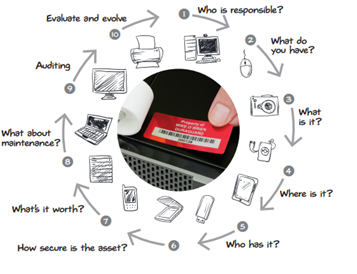

|
Edward Lowton
Editor |


|
| Home> | Efficient Maintenance | >Training | >Ten steps to asset tracking |
ARTICLE
Ten steps to asset tracking
16 April 2015
Seton suggests 10 simple steps to help companies track their assets.

- Who is responsible? Assign an asset manager to control, build and maintain your process. Formalise the asset management policy and communicate it to all employees
- What do you have? Create a comprehensive inventory. Consider the recording method – from simple written recording to sophisticated cloud-based software such as AssetGuard PRO.
- What is it? Ensure the asset manager has sufficient information about each asset for easy management / auditing.
- Where is it? Define whether the asset is mobile or fixed, and whether it is linked to a particular department /cost centre.
- Who has it? Provide information on the asset holder and details of any usage agreements between your organisation and the employee.
- How secure is the Asset? Use an appropriate Asset Tag / Label – you can include a barcode AND an asset number, and even a high durability or tamper evident Asset Tag.
- What’s it worth? Accurately value your inventory. Keep receipts.
- Maintain assets to ensure continued efficient functionality – consider organisational standards of maintenance and legal requirements e.g. PAT testing.
- Regularly assess the performance and usage of assets, repair costs and who is using them most effectively.
- Evaluate and evolve: Review your Asset Management Policy regularly – it is a dynamic and will change as your business changes. www.seton.co.uk/asset_tags
MORE FROM THIS COMPANY
- Save time with cable identification. Download the Guide.
- Free facility signs to help stop COVID-19
- Signs of the times
- Print lean & safety signs on-site. Download the 5S-Plus Guide
- Easily automate product identification and improve traceability
- Specialised traceability labels: Brady’s UltraTemp™ Label Series
- Boosting safety compliance with visual tagging
- Easily monitor temperatures with new Brady's RFID Labels
- Brady's RFID solution drives efficiency gains
- Are you involved in managing safety signage?
RELATED ARTICLES
- Training tailored to brewery needs
- Asset Management: Standard Practice
- Help with problem solving
- Inspection, test & monitoring: A choice of career development pathways
- Savings in store
- Guide to live electrical system inspections
- Revised guidance on asbestos
- Learn more about thermography
- Hose integrity, inspection and management
- Improve your skills and knowledge on rolling bearings and condition monitoring
OTHER ARTICLES IN THIS SECTION

















